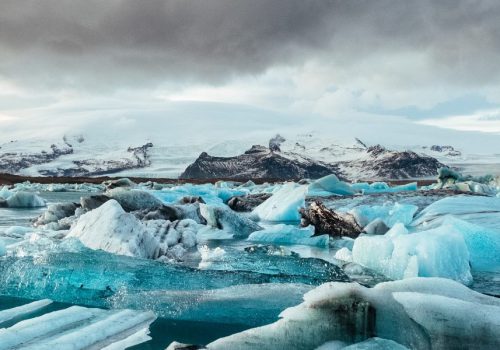You can’t avoid climate change, that much is certain. Its impacts are already being felt around the world in a variety of ways, from extreme weather events to threats to our water and food security. While some changes can be attributed to natural phenomena (volcanic eruptions, solar radiation, tectonic shifts…), human activity is mostly to blame for the increased frequency and severity of our natural disasters. But severe weather conditions are not just becoming more frequent, they are also getting much harder to predict.
A changing climate can, directly or indirectly, affect many aspects of society in potentially disruptive ways. Floods and droughts damage our agriculture, rising sea levels erode our coastlines, and intense storms destroy our homes and communities. In short, climate change is disrupting all areas of life, including essential services such as transportation, telecommunications, energy and water supplies. Over time, scientists expect an increase in disease outbreaks, loss of life and population displacement, especially among the world’s most vulnerable communities.
Reversing the process calls for swift, decisive action. Nature-based solutions are an important piece of the puzzle, both for carbon storage and building climate resilience. Using natural resources to address environmental and climate challenges has enormous potential to reduce the negative impacts, while preserving the planet and its people. Let’s take a closer look at how nature can help us tackle the climate crisis.
What are the solutions to climate change?
Core to climate change solutions is reducing greenhouse gases. There are two ways to do this: we can stop adding them to the atmosphere, and we can support Earth’s ability to remove them from the atmosphere. This is called climate change mitigation, and its goal is to reduce emissions to a level that Earth can handle without further warming.
While these actions are essential, they aren’t sufficient. Even if we stabilized greenhouse gas emissions today, scientists predict that the world would continue to warm to well beyond 2 °C above preindustrial levels. Anticipating and managing the negative effects of climate change is vital to help us cope with the impacts that are already happening, and those still expected to happen in the coming decades. This is called climate change adaptation and includes all the ways we can change – or adapt – to the effects of climate change so we can stay fed, healthy and safe.
Embracing natural climate solutions
For climate action to be sustainable, healthy climate solutions must harness the power of nature itself. Combined with cutting fossil fuels, natural climate solutions offer immediate and cost-effective ways to tackle the climate crisis while supporting thriving ecosystems and resilient communities.
Nature-based solutions to climate change include a collection of strategies that have the potential to both reduce and remove greenhouse gas emissions. They do this by enhancing the capacity of ecosystems to absorb carbon dioxide or by restoring damaged habitats so that they no longer emit harmful greenhouse gas emissions. By harnessing nature’s ability to balance its ecological systems, natural climate solutions help protect, better manage and restore the environment, ensuring it can continue to provide essential ecosystems services.
Three climate change actions that protect the planet
Protect, manage, restore – that’s the basic formula. Taking action to regenerate the lands and ecosystems plays an important role in removing additional carbon from the atmosphere and improving soil health, water quality and biodiversity. It can also help avert the worst effects of climate change.
- Protection: Healthy ecosystems can serve as natural buffers against extreme events such as wildfires, flooding and drought. Examples include reefs and barrier islands that shield coastlines from storm surges, wetland ecosystems that absorb floodwaters, and “controlled” burning that clears excess forest debris, reducing the risk of more destructive wildfires.
- Management: Effectively managing natural-based solutions can contribute to climate mitigation. For instance, improving the way forests are managed keeps the soils in good condition so that they can continue to perform as effective carbon sinks. In the same way, adapting farming practices to changing climate conditions, for example by growing more heat/drought-tolerant crops, helps support food resilience.
- Restoration: Restoring degraded habitats by bringing ecological diversity into the landscape helps reinforce nature’s ability to address climate change, and leads to greater ecosystem stability. We need to dedicate more land to nature. For example, planting trees in cities, reviving formerly forested land, and reverting natural flows to coastal wetlands and peatlands, will all contribute to increasing carbon sequestration.
When conserved, restored and managed wisely, natural ecosystems reduce emissions by absorbing and storing large amounts of greenhouse gases. In addition to removing emissions from the atmosphere, these healthy climate solutions provide numerous benefits: cleaner air and water; flood and erosion control; increased biodiversity; and the ability to adapt to the impacts of climate change.
Nature-based climate solutions in action
While many of us are still just talking about possible solutions to climate change, thousands of people are already acting on the ground. Many conservation programmes carried out in recent years spark hope for a brighter climate future. Covering all three aspects of natural climate solutions – protection, management and restoration – these projects work towards reviving ecosystems once threatened by overexploitation, land conversion and pollution.
One of the most inspirational is Africa’s “Great Green Wall” initiative that aims to grow an 8 000 km mosaic of trees, grasslands and vegetation across the entire width of the continent, transforming the lives of millions who live on the frontline of climate change. Its goal is to restore 100 million hectares of degraded land, sequester 250 million tonnes of carbon and create 10 million green jobs in the rural areas across the Sahel region by 2030.
How do ISO standards support climate action solutions?
ISO is strongly committed to supporting climate protection efforts. International Standards have a key role to play in promoting the wider uptake of nature-based solutions to climate change in urban and rural areas. They do this by giving key players the tools to achieve a successful green transition, and supporting governments’ policy ambitions for a more sustainable, climate-neutral economy.
Within this context, ISO has been developing environmental standards across the board. These include the ISO 14000 suite of standards on environmental management systems, which details practical tools for organizations to manage the impact of their activities on the environment. Other examples include standards for “positive” sustainable agriculture, forestry, biodiversity, and other forms of nature-based solutions.
ISO 14001 Environmental management systems
Accelerating the transition
Nature-based solutions are fast becoming a central component of local government strategies for environmental and climate action. Climate solutions that are inspired and supported by nature offer a holistic and cost-effective way to protect, manage and restore the environment, while delivering tangible benefits for society. Nature-based solutions can generate income for local communities and benefit municipalities that depend on these resources for the health and well-being of their residents.
Bringing natural climate solutions to scale will require a concerted effort – and some help from ISO standards. Climate change is a major and growing global threat to nature, biodiversity and people. However, nature also provides key solutions – if the global community takes steps to protect, restore and better manage its natural resources. All the solutions to bring climate change under control are at our fingertips; what we need now is a collective endeavour to implement them effectively.
Disclaimer: PECB has obtained permission to publish the articles written by ISO.









